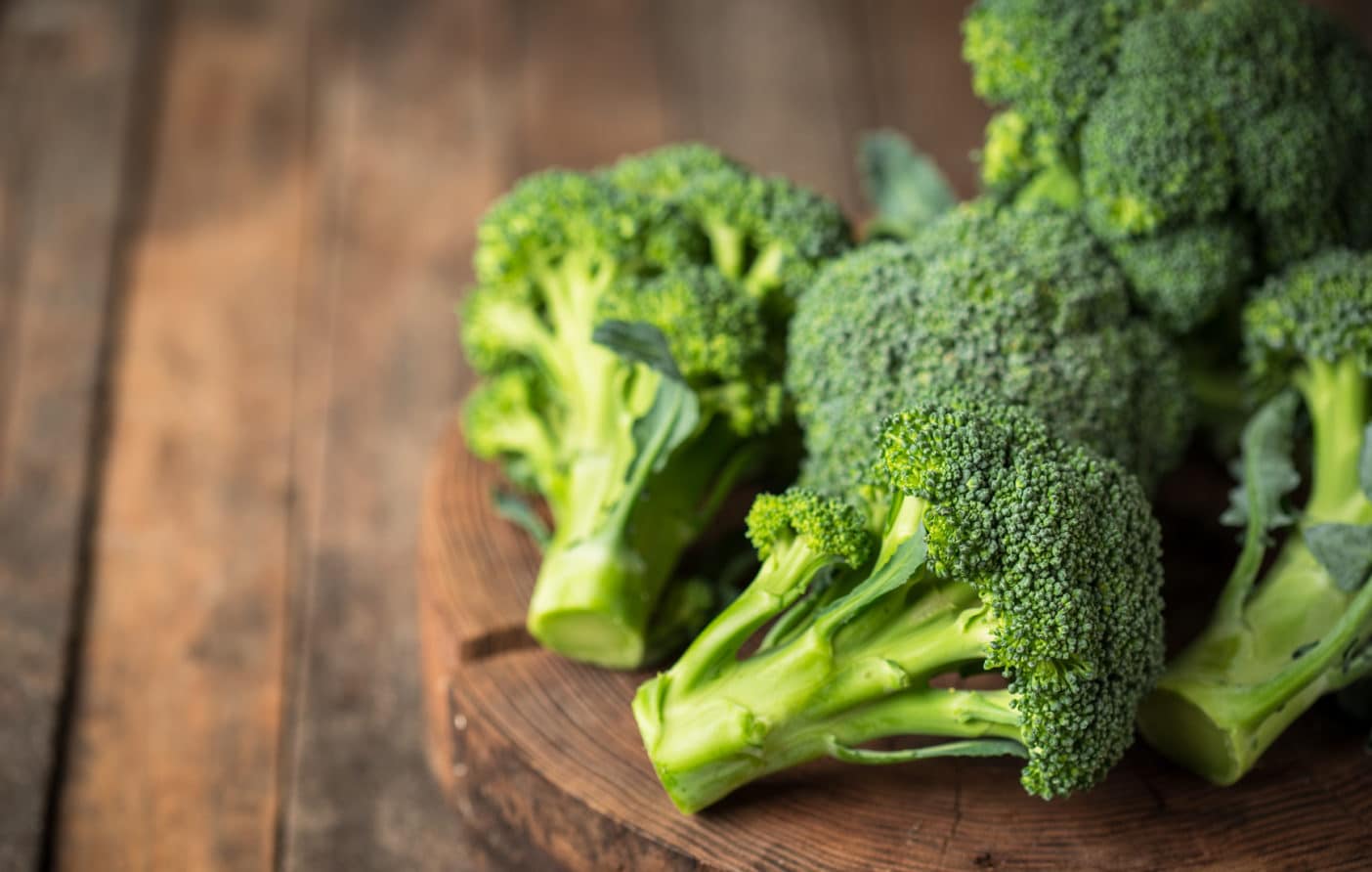Sulforaphane

The secondary plant substance sulforaphane is contained in many cruciferous vegetables and, as a mustard oil glycoside, gives them either a slightly bitter or a pungent taste. The content is particularly high in broccoli, cabbage varieties such as flower and Brussels sprouts, and in cress sprouts. Sulforaphane was discovered relatively late: in 1992, John Hopkins University in Baltimore (USA) succeeded in isolating the substance from broccoli for the first time. Since then, sulforaphane has been the focus of scientific attention, because antimicrobial and antioxidant properties are attributed to the substance. The special thing about the oxidative activity, however, is that free radicals are rendered harmless indirectly by activating special detoxification enzymes (the so-called phase II enzymes) in the liver. This clearly distinguishes the mustard oil glycoside from radical scavengers such as vitamin C, vitamin E or beta-carotene, which neutralise free radicals in a direct way. Numerous studies have already shown that sulforaphane is not only suitable for cancer prophylaxis, but can also be used to support the treatment of various types of cancer. Further studies also provided important indications of the effectiveness of sulforaphane in various other diseases. In this context, asthma, hay fever, arthritis and Alzheimer’s disease were mentioned in particular.
Sulforaphane in cosmetics
But the positive effects of sulforaphane can also be used in cosmetics. The substance acts strategically and cleverly against free radicals and acts from the background, while vitamins C and E, for example, sacrifice themselves in corresponding activities. This makes it very suitable for cosmetic anti-ageing products.
Furthermore, American researchers have found that sulforaphane can reduce the reddening of the skin caused by UV radiation by up to 38 percent. The substance does not act directly on the rays, but rather stimulates the production of certain proteins in the skin cells. Paul Talalay from the John Hopkinks University confirmed that the protective effect of the proteins produced can last for several days. It is well known that the free radicals produced by UV radiation can damage the genetic material and thus cause cancer. As was shown in an experiment, the protection for the cells after two days was still about 30 percent of the original effect. Melanin, carotenoids, and other natural UV-protective agents, on the other hand, usually only have a very short-term effect.
Sulforaphane in hair care
But not only that: It is now also known that sulforaphane stimulates hair growth and can help against hair loss, provided it is androgenic alopecia. In this type of hair loss, the hair roots react hypersensitively to the steroid hormone dihydrotestosterone (DHT). The hair follicles are weakened or damaged by the DHT, which usually leads to an extreme shortening of the growth phase. Scientists found that sulforaphane increases the level of 3β-hydroxysteroid dehydrogenase in the liver. This enzyme causes DHT to be broken down much faster in the blood, which prevents suppression of hair growth. High-quality broccoli seed oil, which contains sulforaphane, also gives the hair a wonderful shine and has a similar effect to silicone, but is completely natural and harmless. It also does not weigh down the hair. The oil can be used for both wet and dry hair and is massaged in drop by drop.
In addition, the power substance can also be helpful for psoriasis. As an autoimmune disease, psoriasis can usually be fought very well with antioxidants. Since sulforaphane has a highly oxidative effect and is able to alleviate oxidative stress, the substance has the optimal potential to be used in inflammation-related skin diseases.
Fact Sheet Extract of Garden Cress (Lepidium sativum)
INCI: Lepidium Sativum Sprout Extract
CAS number: 90063-43-7
EINECS/EILINCS-number: 290-001-4
Fact Sheet Broccoli Extract
INCI: Brassica Oleracea Italica (Broccoli) Extract
CAS number: 223749-36-8
Fact sheet Sulforaphane
INCI: Sulforaphane
CAS number: 4478-93-7
Definition: a mustard oil with the chemical name 1-isothiocyanato-4-methylsulfinyl-butane
Description: a light to yellowish liquid
Summary sulforaphane
Sulforaphane effectively protects the skin from external influences and stimulates hair growth. Dry and dull hair also gets a beautiful shine. The substance, which is mainly found in broccoli, cress and some types of cabbage, functions as an extremely strong, indirect antioxidant and can be integrated very well into cosmetic formulations. Side effects are generally not to be expected with an appropriate concentration. Cosmacon will be happy to develop innovative cosmetic products for you with this valuable and completely natural power substance.
Literature:
Antioxidant functions of sulforaphane: a potent inducer of Phase II detoxification enzymes; J. Fahey, P. Talalay; Food Chem. Toxicol. 1999, 37, Seite 973-979
What do we know about sulforaphane protection against photoaging?; S.Sikdar, M. Papadopoulou, J. Dubois; J. Cosmet Dermatol. 2016; 15; Seite 72-77
Growth inhibition of a spectrum of bacterial and fungal pathogens by sulforaphane-an isothiocynate product found in broccoli and other cruciferous vegetables; N.L. Johansson, C.S. Pavia, J.W. Chiao; Planta Med. 2008; 74; Seite 747-750
Sulforaphan – Der verborgene Schatz der Kreuzblütler; M. Bae; Vitalstoffe;2019;4; Seite 34-27
Epigenetics/Epigenomics and Prevention of Early Stages of Cancer by Isothiocyanates.
Hudlikar R, Wang L, Wu R, Li S, Peter R, Shannar A, Chou PJ, Liu X, Liu Z, Kuo HD, Kong AN.Cancer Prev Res (Phila). 2021 Feb;14(2):151-164
Isothiocyanates: Translating the Power of Plants to People.
Palliyaguru DL, Yuan JM, Kensler TW, Fahey JW.Mol Nutr Food Res. 2018 Sep;62(18):e1700965
Stability of sulforaphane for topical formulation.
Franklin SJ, Dickinson SE, Karlage KL, Bowden GT, Myrdal PB.Drug Dev Ind Pharm. 2014 Apr;40(4):494-502
he indirect antioxidant sulforaphane protects against thiopurine-mediated photooxidative stress.
Benedict AL, Knatko EV, Dinkova-Kostova AT.Carcinogenesis. 2012 Dec;33(12):2457-66
